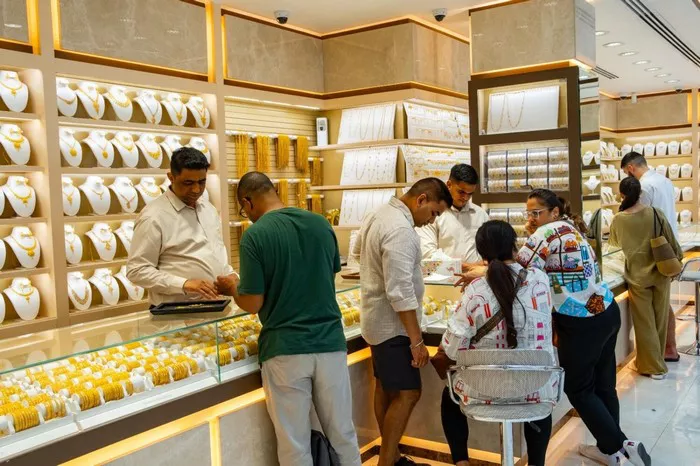The luxury jewelry market is on the brink of substantial expansion, with projections indicating a compound annual growth rate (CAGR) of 7.9%. This growth is expected to propel market revenue to an impressive USD 84.2 billion by 2030. As the sector adapts to changing consumer preferences and emerging trends, it presents exciting new business opportunities for investors and manufacturers alike.
Overview of the Luxury Jewelry Market
The luxury jewelry market represents a dynamic sector that caters to consumers seeking elegance, prestige, and beauty in their accessories. This industry encompasses a diverse array of products, including watches, rings, pearls, gold, diamonds, and silver. Each category presents unique pricing strategies, marketing approaches, and consumer perceptions, contributing to the market’s complexity.
Recent years have seen significant changes in consumer behavior. Modern consumers are increasingly drawn to luxury jewelry as a means of self-expression and status enhancement. As a result, jewelry manufacturers are continuously innovating and updating their offerings to avoid falling behind in this competitive landscape.
Drivers of Market Growth
Several factors are fueling the robust growth of the luxury jewelry market. Increased modernization and westernization in consumer attitudes have played crucial roles in shaping demand. Rising levels of personal disposable income across various demographics have also contributed to a surge in interest in high-end jewelry items.
One notable trend is the growing demand for gender-fluid jewelry options. This shift reflects broader societal movements towards inclusivity and diversity, allowing consumers to express their individuality without traditional gender constraints. As consumer preferences evolve, new opportunities for growth and expansion emerge within the jewelry industry.
Market Research Methodology
The insights into the luxury jewelry market have been gathered through a comprehensive research methodology. This includes data analysis of market trends, consumer preferences, and competitive dynamics. By examining various regional markets and segments, researchers can identify patterns that inform investment opportunities and strategic planning.
Regional Insights: Asia-Pacific Leads the Market
The Asia-Pacific region has emerged as the dominant player in the global luxury jewelry market, holding the largest market share and demonstrating strong growth potential in 2023. Key industry players, including Tanishq, Malabar Gold and Diamonds, Qeelin, and Wallace Chan, are central to this vibrant market.
Factors driving this growth include a demand for innovative designs and high-quality jewelry among elite consumers. The integration of advanced technologies, such as computer-aided design (CAD), has further enhanced manufacturing processes, enabling brands to produce intricate and appealing jewelry pieces.
Market Segmentation: Applications and Consumer Trends
According to recent research, the luxury jewelry market can be segmented by application into three primary categories: Men, Women, and Children. The women’s segment currently leads the market, commanding the highest revenue share over the forecast period from 2024 to 2030.
The rise of female self-purchasers significantly influences this segment’s growth. Research from the JCK State of the Jewelry Industry Report highlights a notable trend, with 76% of respondents indicating an increase in women purchasing jewelry for themselves. This trend underscores the shifting dynamics of the market, where women are empowered to make personal purchasing decisions.
The Impact of Changing Consumer Behavior
The increase in women buying jewelry for themselves is a key driver of growth in the luxury jewelry market. As consumers become more conscious of their preferences and choices, the industry has adapted to cater to these evolving demands. This shift not only enhances the market’s diversity but also empowers women to embrace luxury jewelry as a personal statement.
Moreover, the increasing focus on sustainability and ethical sourcing in the luxury jewelry sector reflects changing consumer values. Brands that prioritize responsible practices are likely to resonate more with modern consumers, further boosting their appeal and market share.
Opportunities for Innovation
As the luxury jewelry market continues to grow, innovation will be critical for brands looking to capture consumer interest. This includes developing new product lines, exploring unique designs, and utilizing advanced technologies in production.
The rise of e-commerce has also transformed how consumers shop for luxury jewelry. Online platforms provide access to a broader audience, enabling brands to reach potential customers beyond traditional retail spaces. Investing in digital marketing strategies and online sales channels can significantly enhance visibility and sales potential.
Conclusion: A Bright Future for Luxury Jewelry
The luxury jewelry market is poised for significant expansion, driven by evolving consumer preferences, increased disposable income, and a growing focus on inclusivity and diversity. With a projected CAGR of 7.9%, the market is on track to reach USD 84.2 billion by 2030.
As brands adapt to the changing landscape, opportunities for growth and innovation abound. By understanding consumer trends and embracing new strategies, jewelry manufacturers can navigate this dynamic market and achieve lasting success. The future of luxury jewelry is bright, and those who recognize and respond to these changes will be well-positioned to thrive.
Related topics:

